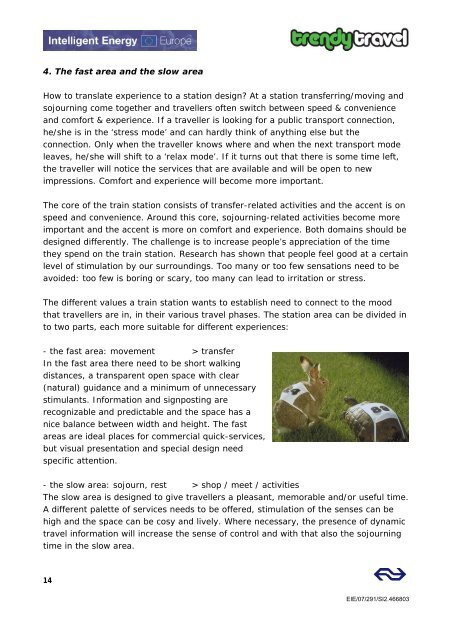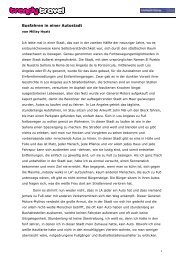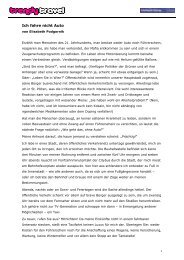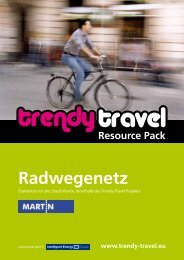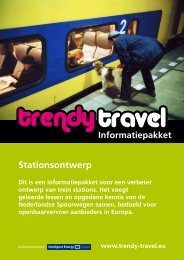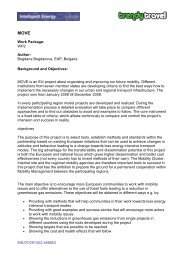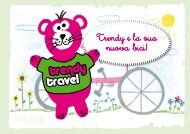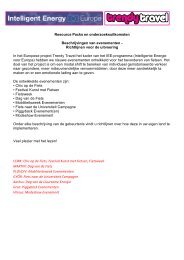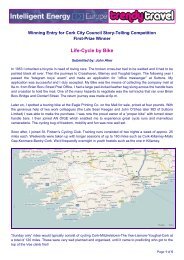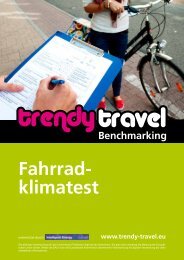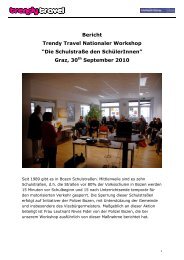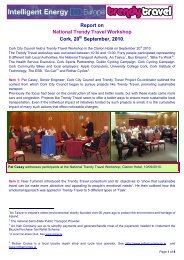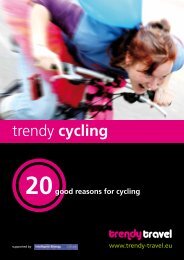Resource Pack: Railway Station Design - Eltis
Resource Pack: Railway Station Design - Eltis
Resource Pack: Railway Station Design - Eltis
You also want an ePaper? Increase the reach of your titles
YUMPU automatically turns print PDFs into web optimized ePapers that Google loves.
4. The fast area and the slow area<br />
How to translate experience to a station design? At a station transferring/moving and<br />
sojourning come together and travellers often switch between speed & convenience<br />
and comfort & experience. If a traveller is looking for a public transport connection,<br />
he/she is in the ‘stress mode’ and can hardly think of anything else but the<br />
connection. Only when the traveller knows where and when the next transport mode<br />
leaves, he/she will shift to a ‘relax mode’. If it turns out that there is some time left,<br />
the traveller will notice the services that are available and will be open to new<br />
impressions. Comfort and experience will become more important.<br />
The core of the train station consists of transfer-related activities and the accent is on<br />
speed and convenience. Around this core, sojourning-related activities become more<br />
important and the accent is more on comfort and experience. Both domains should be<br />
designed differently. The challenge is to increase people’s appreciation of the time<br />
they spend on the train station. Research has shown that people feel good at a certain<br />
level of stimulation by our surroundings. Too many or too few sensations need to be<br />
avoided: too few is boring or scary, too many can lead to irritation or stress.<br />
The different values a train station wants to establish need to connect to the mood<br />
that travellers are in, in their various travel phases. The station area can be divided in<br />
to two parts, each more suitable for different experiences:<br />
- the fast area: movement > transfer<br />
In the fast area there need to be short walking<br />
distances, a transparent open space with clear<br />
(natural) guidance and a minimum of unnecessary<br />
stimulants. Information and signposting are<br />
recognizable and predictable and the space has a<br />
nice balance between width and height. The fast<br />
areas are ideal places for commercial quick-services,<br />
but visual presentation and special design need<br />
specific attention.<br />
- the slow area: sojourn, rest > shop / meet / activities<br />
The slow area is designed to give travellers a pleasant, memorable and/or useful time.<br />
A different palette of services needs to be offered, stimulation of the senses can be<br />
high and the space can be cosy and lively. Where necessary, the presence of dynamic<br />
travel information will increase the sense of control and with that also the sojourning<br />
time in the slow area.<br />
14<br />
EIE/07/291/SI2.466803


